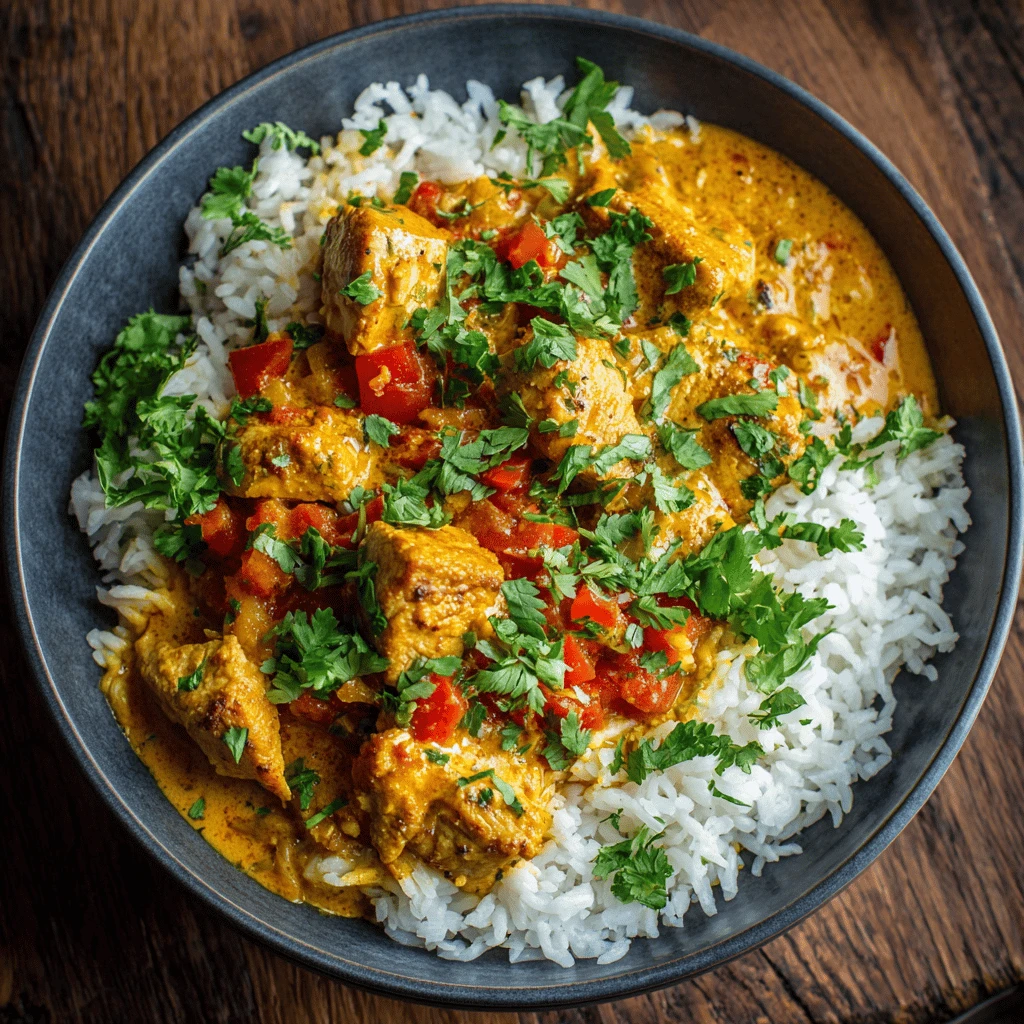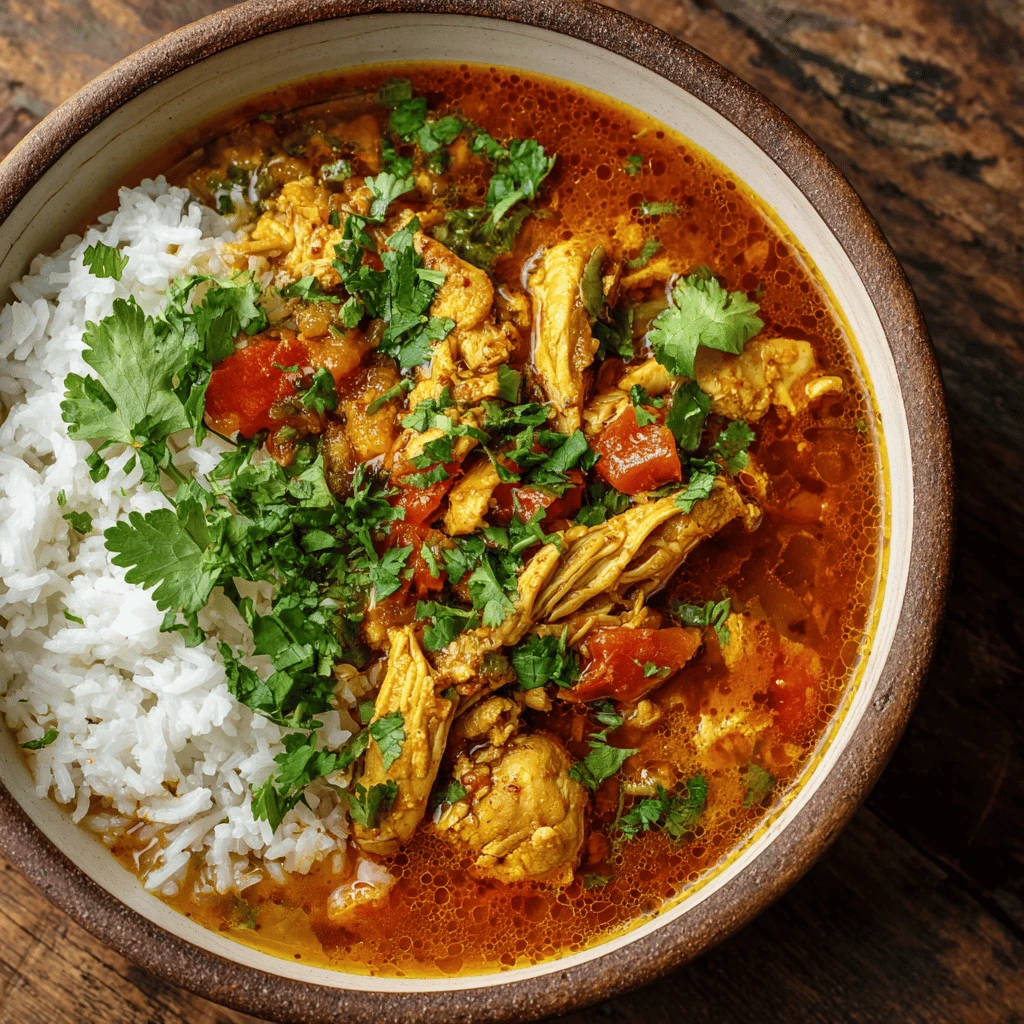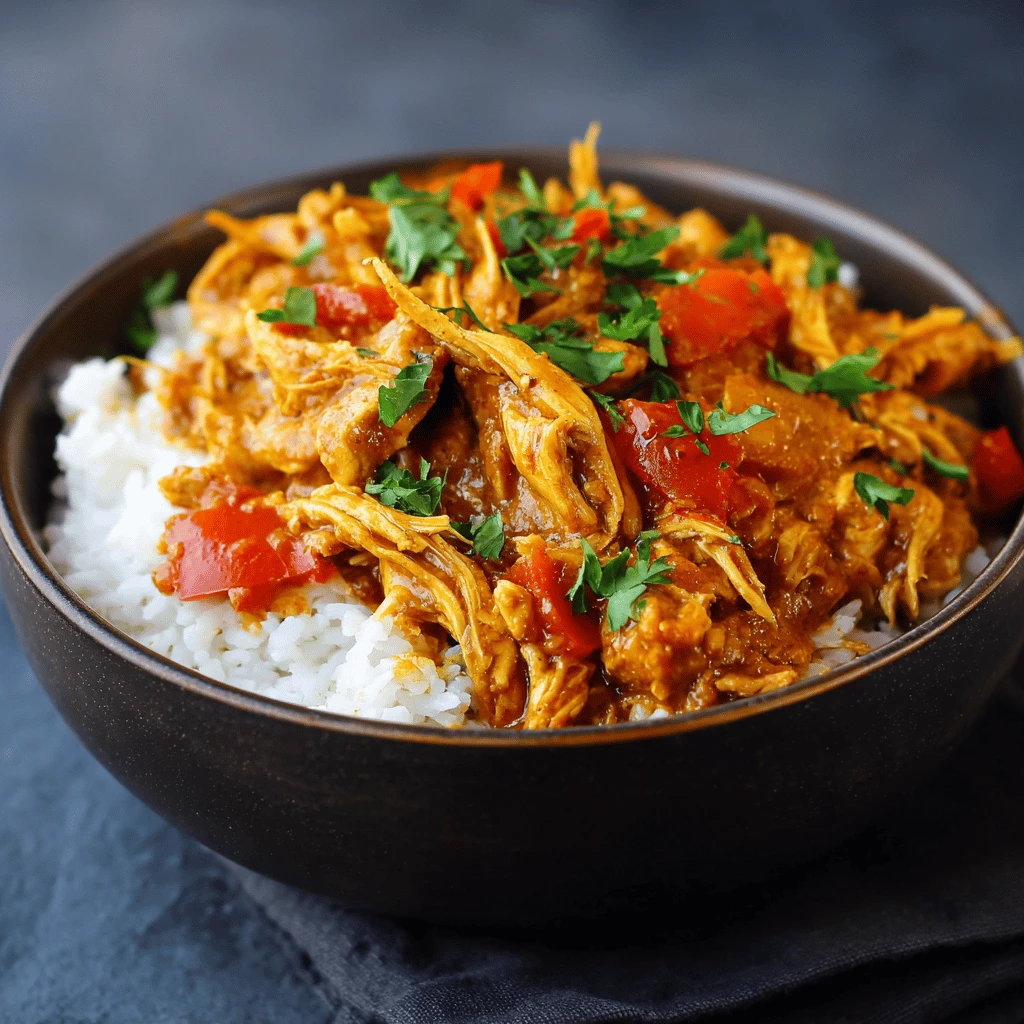Budget Crockpot Chicken Curry
Chicken curry is a beloved dish enjoyed worldwide, known for its rich flavors and comforting warmth. But the perception that it requires hours of simmering and a long list of exotic ingredients can deter many home cooks. Fear not! This guide unveils how to create a delectable and budget-friendly chicken curry right in your slow cooker. Utilizing affordable ingredients and simple techniques, you can enjoy a flavorful and satisfying meal without breaking the bank.
Why Slow Cooker Chicken Curry is a Budget-Friendly Winner
Slow cookers are a game-changer for budget-conscious cooking. They allow you to transform less expensive cuts of chicken into tender, flavorful masterpieces. Unlike some stovetop or oven recipes that demand prime cuts, the slow cooker tenderizes even the toughest chicken thighs, resulting in succulent meat that falls off the bone.
Furthermore, slow cooking minimizes hands-on time. Simply toss the ingredients into the pot, set the timer, and walk away. This is especially beneficial for busy weeknights when you don’t have hours to dedicate to cooking. This also translates to lower energy consumption. Slow cookers use significantly less electricity than ovens, contributing to lower utility bills.
Choosing the right ingredients is also key to keeping costs down. Chicken thighs are generally more affordable than chicken breasts and offer a richer flavor that stands up beautifully to the slow cooking process. Opting for frozen vegetables over fresh can also save money without sacrificing nutritional value.
Finally, slow cooker chicken curry is incredibly versatile. You can easily adapt the recipe to use up leftover vegetables or customize the spice level to your preference. This reduces food waste and ensures that you’re creating a meal that suits your individual tastes and dietary needs.
Essential Ingredients for a Delicious and Affordable Curry
The foundation of any great curry lies in its ingredients. Fortunately, crafting a budget-friendly version doesn’t require compromising on flavor. Here’s a breakdown of the essential components:
- Chicken: As mentioned earlier, chicken thighs are the star of this budget-friendly show. Bone-in, skin-on thighs offer the most flavor, but boneless, skinless thighs are equally suitable and easier to work with. Aim for around 2-2.5 pounds of chicken.
- Aromatic Base: This is where the flavor explosion begins. Onions, garlic, and ginger are the holy trinity of curry aromatics. These are readily available and relatively inexpensive. Use one large onion, 3-4 cloves of garlic, and a 1-inch piece of ginger.
- Canned Tomatoes: Canned crushed tomatoes or diced tomatoes form the base of the sauce. They provide acidity and sweetness, balancing the richness of the spices. A 28-ounce can is ideal.
- Coconut Milk: Coconut milk adds richness and creaminess to the curry. Full-fat coconut milk provides the most authentic flavor, but light coconut milk can be used to reduce calories. Use one 13.5-ounce can.
- Curry Powder: This is the shortcut to achieving that classic curry flavor. Curry powder is a blend of various spices, including turmeric, cumin, coriander, and chili powder. Start with 2-3 tablespoons and adjust to your preference.
- Spices (Optional): While curry powder provides a good base, adding individual spices can elevate the flavor even further. Consider adding a teaspoon each of ground cumin, coriander, and turmeric, and a half-teaspoon of chili powder or cayenne pepper for heat.
- Vegetables: This is where you can get creative and use up whatever you have on hand. Frozen peas, carrots, and green beans are affordable and convenient options. Other vegetables that work well include potatoes, sweet potatoes, cauliflower, and spinach.
- Broth: Chicken broth or vegetable broth adds moisture and depth of flavor to the curry. One cup is usually sufficient.
- Lime Juice: A squeeze of lime juice at the end brightens up the flavors and adds a touch of acidity.
- Cilantro (Optional): Fresh cilantro is a popular garnish for curry, adding a fresh, herbaceous note.
Step-by-Step Guide to Slow Cooker Chicken Curry Success
Now that you have all your ingredients, let’s get cooking! This step-by-step guide will walk you through the process of creating a delicious and budget-friendly chicken curry in your slow cooker.
1. Prepare the Ingredients: Chop the onion, garlic, and ginger. If using bone-in, skin-on chicken thighs, you can remove the skin for a healthier option.
2. Layer the Ingredients: In the slow cooker, combine the onion, garlic, ginger, canned tomatoes, coconut milk, curry powder, and any optional spices. Stir well to combine.
3. Add the Chicken: Place the chicken thighs on top of the sauce. Make sure they are mostly submerged.
4. Add Vegetables: Add your chosen vegetables to the slow cooker.
5. Pour in Broth: Pour in the chicken or vegetable broth.
6. Cook on Low: Cover the slow cooker and cook on low for 6-8 hours, or on high for 3-4 hours. The chicken should be very tender and easily shreddable.
7. Shred the Chicken: Once the chicken is cooked, use two forks to shred it directly in the slow cooker.
8. Stir and Simmer: Stir everything together and let it simmer for another 15-30 minutes to allow the flavors to meld.
9. Season and Serve: Taste the curry and adjust the seasoning as needed. Add salt, pepper, or more curry powder to your liking. Stir in a squeeze of lime juice.
10. Serve: Serve the curry hot over rice, quinoa, or naan bread. Garnish with fresh cilantro, if desired.
Tips and Tricks for the Best Budget-Friendly Curry
- Brown the Chicken (Optional): For an extra layer of flavor, brown the chicken thighs in a skillet before adding them to the slow cooker. This step isn’t essential, but it adds depth to the dish.
- Toast the Spices: Toasting the spices in a dry skillet for a few minutes before adding them to the slow cooker enhances their aroma and flavor. Be careful not to burn them.
- Spice Level: Adjust the amount of chili powder or cayenne pepper to control the spice level. Start with a small amount and add more to taste.
- Thicken the Sauce: If the sauce is too thin, you can thicken it by mixing a tablespoon of cornstarch with two tablespoons of cold water and stirring it into the curry during the last 30 minutes of cooking.
- Leftovers: Slow cooker chicken curry is even better the next day! Store leftovers in an airtight container in the refrigerator for up to 3-4 days.
- Freezing: This curry freezes well. Allow it to cool completely before transferring it to freezer-safe containers. Freeze for up to 2-3 months.
- Customize with Legumes: Adding a can of drained and rinsed chickpeas or lentils can boost the protein content and make the curry even more filling.
- Add a Touch of Sweetness: A teaspoon of honey or brown sugar can balance the acidity of the tomatoes and enhance the overall flavor.
- Don’t Overcook: Overcooking the chicken can make it dry and stringy. Check for doneness after 6 hours on low or 3 hours on high.
- Use Different Cuts: While chicken thighs are the most economical choice, you can also use chicken drumsticks or a whole chicken cut into pieces. Adjust the cooking time accordingly.
Serving Suggestions and Side Dish Pairings
Slow cooker chicken curry is a versatile dish that can be served in various ways. Here are some serving suggestions and side dish pairings:
- Rice: This is the classic accompaniment to curry. Basmati rice, jasmine rice, or brown rice all work well.
- Naan Bread: Warm naan bread is perfect for scooping up the curry and soaking up the flavorful sauce.
- Roti: Another type of flatbread that pairs well with curry.
- Quinoa: For a healthier option, serve the curry over quinoa.
- Couscous: Couscous is a quick and easy side dish that complements the flavors of the curry.
- Raita: A cooling yogurt-based sauce that helps to balance the heat of the curry.
- Mango Chutney: A sweet and tangy condiment that adds a burst of flavor.
- Pickled Onions: A simple and refreshing side dish that provides a contrast to the richness of the curry.
- Cucumber Salad: A light and refreshing salad that helps to cleanse the palate.
- Steamed Vegetables: A simple and healthy side dish that complements the curry.
Frequently Asked Questions About Slow Cooker Chicken Curry
Can I use chicken breasts instead of chicken thighs?
While chicken thighs are recommended for their flavor and tenderness in slow cooking, you can use chicken breasts. Reduce the cooking time to prevent them from drying out. Cook on low for 3-5 hours or on high for 2-3 hours.
Can I make this curry vegetarian?
Yes, simply omit the chicken and add more vegetables or legumes. Cauliflower, potatoes, chickpeas, and lentils are all great options.
Can I make this curry in an Instant Pot?
Yes, you can adapt this recipe for the Instant Pot. Use the sauté function to brown the chicken and aromatics, then add the remaining ingredients. Cook on high pressure for 10-12 minutes, followed by a natural pressure release for 10 minutes.
How long does slow cooker chicken curry last?
Slow cooker chicken curry can be stored in an airtight container in the refrigerator for up to 3-4 days.
Can I freeze slow cooker chicken curry?
Yes, this curry freezes well. Allow it to cool completely before transferring it to freezer-safe containers. Freeze for up to 2-3 months.
How do I reheat slow cooker chicken curry?
Reheat the curry in a saucepan over medium heat, or in the microwave. Add a splash of water or broth if needed to prevent it from drying out.
Can I add other vegetables to this curry?
Absolutely! Feel free to add any vegetables you like. Spinach, bell peppers, mushrooms, and zucchini are all good options.
What if my curry is too spicy?
Add a dollop of yogurt or sour cream to each serving to cool it down. You can also add a teaspoon of sugar or honey to balance the heat.
What if my curry is too bland?
Add more curry powder, chili powder, or cayenne pepper to taste. You can also add a squeeze of lime juice or a dash of hot sauce.
Can I use fresh tomatoes instead of canned tomatoes?
Yes, you can use fresh tomatoes. Use about 2 pounds of fresh tomatoes, peeled and chopped. You may need to add a little extra liquid (broth or water) if the tomatoes are not very juicy.




